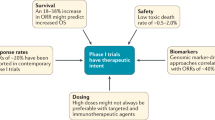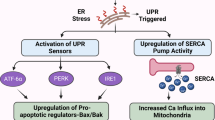Abstract
The cancer treatment landscape has changed dramatically since the turn of the century, resulting in substantial improvements in outcomes for patients. This Review summarizes trends in the approval of oncology therapeutic products by the United States Food and Drug Administration (FDA) from January 2000 to October 2022, based on a categorization of these products by their mechanism of action and primary target. Notably, the rate of oncology indication approvals has increased in this time, driven by approvals for targeted therapies, as has the rate of introduction of new therapeutic approaches. Kinase inhibitors are the dominant product class by number of approved products and indications, yet immune checkpoint inhibitors have the second most approvals despite not entering the market until 2011. Other trends include a slight increase in the share of approvals for biomarker-defined populations and the emergence of tumour-site-agnostic approvals. Finally, we consider the implications of the trends for the future of oncology therapeutic product development, including the impact of novel therapeutic approaches and technologies.
This is a preview of subscription content, access via your institution
Access options
Access Nature and 54 other Nature Portfolio journals
Get Nature+, our best-value online-access subscription
$29.99 / 30 days
cancel any time
Subscribe to this journal
Receive 12 print issues and online access
$209.00 per year
only $17.42 per issue
Buy this article
- Purchase on Springer Link
- Instant access to full article PDF
Prices may be subject to local taxes which are calculated during checkout






Similar content being viewed by others
References
DeVita, V. T. Jr & Chu, E. A history of cancer chemotherapy. Cancer Res. 68, 8643–8653 (2008).
FDA. Drugs@FDA: NDA006695 (mechlorethamine hydrochloride). https://www.accessdata.fda.gov/scripts/cder/daf/index.cfm?event=overview.process&ApplNo=006695 (2022).
Doroshow, D. B. & Doroshow, J. H. Genomics and the history of precision oncology. Surg. Oncol. Clin. N. Am. 29, 35–49 (2020).
FDA. Drugs@FDA: BLA 103792 (trastuzumab) ORIG-1 label. https://www.accessdata.fda.gov/drugsatfda_docs/label/1998/trasgen092598lb.pdf (1998).
FDA. Drugs@FDA: NDA 021335 (imatinib mesylate) ORIG-1 label. https://www.accessdata.fda.gov/drugsatfda_docs/label/2001/21335lbl.pdf (2001).
Ries, L. et al. SEER Cancer Statistics Review 1973–1999 (National Cancer Institute, 2002).
Howlader, N. et al. SEER Cancer Statistics Review 1975–2018 (National Cancer Institute 2021).
Siegel, R. L., Miller, K. D. & Jemal, A. Cancer statistics, 2020. CA Cancer J. Clin. 70, 7–30 (2020).
Unger, J. M., Xiao, H., LeBlanc, M., Hershman, D. L. & Blanke, C. D. Cancer clinical trial participation at the 1-year anniversary of the outbreak of the COVID-19 pandemic. JAMA Netw. Open 4, e2118433 (2021).
FDA. Selumetinib multi-discipline review. https://www.accessdata.fda.gov/drugsatfda_docs/nda/2020/213756Orig1s000MultidisciplineR.pdf (2020).
FDA. FDA grants accelerated approval to Darzalex Faspro for newly diagnosed light chain amyloidosis. https://www.fda.gov/drugs/resources-information-approved-drugs/fda-grants-accelerated-approval-darzalex-faspro-newly-diagnosed-light-chain-amyloidosis (2021).
FDA. FDA approves crizotinib for ALK-positive inflammatory myofibroblastic tumor. https://www.fda.gov/drugs/resources-information-approved-drugs/fda-approves-crizotinib-alk-positive-inflammatory-myofibroblastic-tumor (2022).
Lemery, S., Keegan, P. & Pazdur, R. First FDA approval agnostic of cancer site - when a biomarker defines the indication. N. Engl. J. Med. 377, 1409–1412 (2017).
Kramer, A., Green, J., Pollard, J. Jr. & Tugendreich, S. Causal analysis approaches in ingenuity pathway analysis. Bioinformatics 30, 523–530 (2014).
Thomas, P. D. et al. PANTHER: making genome‐scale phylogenetics accessible to all. Protein Sci. 31, 8–22 (2022).
Mi, H. & Thomas, P. in Protein Networks and Pathway Analysis (eds Nikolsky, Y. & Bryant, J.) 123–140 (Springer, 2009).
Jia, J. et al. Mechanisms of drug combinations: interaction and network perspectives. Nat. Rev. Drug Discov. 8, 111–128 (2009).
Vasan, N., Baselga, J. & Hyman, D. M. A view on drug resistance in cancer. Nature 575, 299–309 (2019).
FDA. In Vitro Companion Diagnostic Devices: Guidance for Industry and Food and Drug Administration Staff. https://www.fda.gov/media/81309/download (2014).
Beaver, J. A. et al. A 25-year experience of US Food and Drug Administration accelerated approval of malignant hematology and oncology drugs and biologics: a review. JAMA Oncol. 4, 849–856 (2018).
FDA. FDA Oncology Center of Excellence Project Confirm - withdrawn cancer accelerated approvals. https://www.fda.gov/drugs/resources-information-approved-drugs/withdrawn-cancer-accelerated-approvals (2022).
FDA. FDA Oncology Center of Excellence Scientific Collaborative. https://www.fda.gov/about-fda/oncology-center-excellence/oce-scientific-collaborative (2022).
Beaver, J. A. & Pazdur, R. The wild west of checkpoint inhibitor development. N. Engl. J. Med. 386, 1297–1301 (2022).
Yu, J. X., Upadhaya, S., Tatake, R., Barkalow, F. & Hubbard-Lucey, V. M. Cancer cell therapies: the clinical trial landscape. Nat. Rev. Drug Discov. 19, 583–584 (2020).
Pearlman, A. H. et al. Targeting public neoantigens for cancer immunotherapy. Nat. Cancer 2, 487–497 (2021).
Zhao, X., Pan, X., Wang, Y. & Zhang, Y. Targeting neoantigens for cancer immunotherapy. Biomark. Res. 9, 61 (2021).
Dang, C. V., Reddy, E. P., Shokat, K. M. & Soucek, L. Drugging the ‘undruggable’ cancer targets. Nat. Rev. Cancer 17, 502–508 (2017).
Duffy, M. J. & Crown, J. Drugging “undruggable” genes for cancer treatment: are we making progress? Int. J. Cancer 148, 8–17 (2021).
Rudolph, J., Settleman, J. & Malek, S. Emerging trends in cancer drug discovery-from drugging the “Undruggable” to overcoming resistance. Cancer Discov. 11, 815–821 (2021).
Krönke, J. et al. Lenalidomide causes selective degradation of IKZF1 and IKZF3 in multiple myeloma cells. Science 343, 301–305 (2014).
Lu, G. et al. The myeloma drug lenalidomide promotes the cereblon-dependent destruction of Ikaros proteins. Science 343, 305–309 (2014).
Arvanitis, C. D., Ferraro, G. B. & Jain, R. K. The blood–brain barrier and blood–tumour barrier in brain tumours and metastases. Nat. Rev. Cancer 20, 26–41 (2020).
FDA. Tissue Agnostic Drug Development in Oncology Guidance for Industry: Draft Guidance. https://www.fda.gov/media/162346/download (2022).
FDA–NIH Biomarker Working Group. BEST (Biomarkers, endpoints, and other tools) resource [Internet] (Food and Drug Administration, 2016).
Pugh, T. J. et al. AACR Project GENIE: 100,000 cases and beyond. Cancer Discov. 12, 2044–2057 (2022).
Gupta, R. et al. Artificial intelligence to deep learning: machine intelligence approach for drug discovery. Mol. Divers. 25, 1315–1360 (2021).
Lang, F., Schrors, B., Lower, M., Tureci, O. & Sahin, U. Identification of neoantigens for individualized therapeutic cancer vaccines. Nat. Rev. Drug Discov. 21, 261–282 (2022).
Li, B. et al. A novel drug repurposing approach for non-small cell lung cancer using deep learning. PLoS ONE 15, e0233112 (2020).
Chabon, J. J. et al. Integrating genomic features for non-invasive early lung cancer detection. Nature 580, 245–251 (2020).
Awada, H. et al. Machine learning integrates genomic signatures for subclassification beyond primary and secondary acute myeloid leukemia. Blood 138, 1885–1895 (2021).
Sammut, S. J. et al. Multi-omic machine learning predictor of breast cancer therapy response. Nature 601, 623–629 (2022).
Moses, C., Garcia-Bloj, B., Harvey, A. R. & Blancafort, P. Hallmarks of cancer: the CRISPR generation. Eur. J. Cancer 93, 10–18 (2018).
Katti, A., Diaz, B. J., Caragine, C. M., Sanjana, N. E. & Dow, L. E. CRISPR in cancer biology and therapy. Nat. Rev. Cancer 22, 259–279 (2022).
Abbosh, C. et al. Phylogenetic ctDNA analysis depicts early-stage lung cancer evolution. Nature 545, 446–451 (2017).
FDA. Use of Circulating Tumor DNA for Early-Stage Solid Tumor Drug Development Guidance for Industry: Draft guidance. https://www.fda.gov/media/158072/download (2022).
Shu, Y. et al. Circulating tumor DNA mutation profiling by targeted next generation sequencing provides guidance for personalized treatments in multiple cancer types. Sci. Rep. 7, 583 (2017).
FDA. FDA Approves First Liquid Biopsy Next-Generation Sequencing Companion Diagnostic Test. https://www.fda.gov/news-events/press-announcements/fda-approves-first-liquid-biopsy-next-generation-sequencing-companion-diagnostic-test (2020).
Tie, J. et al. Circulating tumor DNA as an early marker of therapeutic response in patients with metastatic colorectal cancer. Ann. Oncol. 26, 1715–1722 (2015).
Chaudhuri, A. A. et al. Early detection of molecular residual disease in localized lung cancer by circulating tumor DNA profilingearly detection of lung cancer MRD by ctDNA profiling. Cancer Discov. 7, 1394–1403 (2017).
FDA. FDA news release: Project Orbis: Strengthening International Collaboration for Oncology Product Reviews, Faster Patient Access to Innovative Therapies. https://www.fda.gov/news-events/fda-voices/project-orbis-strengthening-international-collaboration-oncology-product-reviews-faster-patient (2020).
de Claro, R. A. et al. Project Orbis: global collaborative review program: year one experience. Clin. Cancer Res. 26, 6412–6416 (2020).
Ondov, B. D., Bergman, N. H. & Phillippy, A. M. Interactive metagenomic visualization in a web browser. BMC Bioinformatics 12, 385 (2011).
Krzywinski, M. et al. Circos: an information aesthetic for comparative genomics. Genome Res. 19, 1639–1645 (2009).
FDA. Drugs@FDA: FDA-approved drugs. https://www.accessdata.fda.gov/scripts/cder/daf/index.cfm (2022).
FDA. FDA Center for Biologics Evaluation and Research - Approved cellular and gene therapy products. https://www.fda.gov/vaccines-blood-biologics/cellular-gene-therapy-products/approved-cellular-and-gene-therapy-products (2022).
FDA. FDA Oncology (cancer) / hematologic malignancies approval notifications. https://www.fda.gov/drugs/resources-information-approved-drugs/oncology-cancer-hematologic-malignancies-approval-notifications (2022).
FDA. FDA Oncology Center of Excellence Project Confirm. https://www.fda.gov/about-fda/oncology-center-excellence/project-confirm (2022).
WHO. WHO-ATC index 2022. https://www.whocc.no/atc_ddd_index/ (2022).
NCI. NCI thesaurus. https://ncithesaurus.nci.nih.gov/ncitbrowser/ (2022).
FDA. Center for Drug Evaluation and Research Manual of Policies and Procedures 5018.2. https://www.fda.gov/media/94381/download (2022).
Acknowledgements
This work was funded in part by appointments to the Research Participation Program at the Office of Oncologic Diseases, Center for Drug Evaluation and Research at the FDA administered by the Oak Ridge Institute for Science and Education through an interagency agreement between the U.S. Department of Energy and the FDA. The authors thank S. Balasubramaniam and G. Kim for helpful discussions during early stages of study design.
Author information
Authors and Affiliations
Contributions
E.C.S., A.C.B., Y.G., R.M., G.E.P., H.S., A.S., M.D.T., W.X. and J.A.B. researched data for the article. E.C.S., R.P., V.A.R., J.S. and J.A.B. contributed substantially to discussion of content. E.C.S. and J.A.B. contributed to writing the manuscript. All authors except Y.G. and A.S. reviewed and edited the manuscript.
Corresponding author
Ethics declarations
Competing interests
Y.G., A.S. and J.A.B. completed work on this publication while employees at the FDA. At the time of publishing, Y.G. is an employee and shareholder at BeiGene, A.S. is an employee at the U.S. Department of Health and Human Services, and J.A.B. is an employee and shareholder at Treeline Biosciences. The other authors declare no competing interests.
Peer review
Peer review information
Nature Reviews Drug Discovery thanks Melissa Junttila, Joachim Rudolph and Doriano Fabbro for their contribution to the peer review of this work.
Additional information
Publisher’s note Springer Nature remains neutral with regard to jurisdictional claims in published maps and institutional affiliations.
Supplementary information
Glossary
- Cytotoxic drugs
-
Small-molecule drugs with the primary mode of action of inducing cellular toxicity, generally by interacting with DNA or components of the cell cycle. They affect rapidly dividing cells and are usually genotoxic.
- Indication
-
The approved indication for a given product. This includes the use (for example, for treatment) and disease or condition for which the product is approved, as well as additional information, when applicable, such as use in conjunction with a primary mode of therapy (for example, in combination with another product(s)), the indicated population (for example, by age or biomarkers), and use in specific situations (for example, for use in previously treated patients).
- Targeted biologics
-
Biological products, including monoclonal antibodies, other antibody constructs and conjugates, cellular therapies, enzymes, fusion proteins and viral therapies. They typically recognize specific peptide sequences in proteins present on the surface of cancer cells and have high target specificity.
- Targeted drugs
-
Drugs that inhibit or interfere with defined molecular targets in cancer cells (such as kinases, receptors and other molecules) that are involved in intercellular or intracellular signalling pathways. They are primarily small-molecule drugs, but also include short peptides and radioactive agents without an antibody moiety.
Rights and permissions
About this article
Cite this article
Scott, E.C., Baines, A.C., Gong, Y. et al. Trends in the approval of cancer therapies by the FDA in the twenty-first century. Nat Rev Drug Discov 22, 625–640 (2023). https://doi.org/10.1038/s41573-023-00723-4
Accepted:
Published:
Issue Date:
DOI: https://doi.org/10.1038/s41573-023-00723-4
This article is cited by
-
Rare, late onset of immune checkpoint inhibitor-induced type 1 diabetes mellitus in a patient with small-cell lung cancer treated with serplulimab: a case report and review of the literature
Journal of Medical Case Reports (2024)
-
Redefining cancer research for therapeutic breakthroughs
British Journal of Cancer (2024)
-
Clinical and translational attributes of immune-related adverse events
Nature Cancer (2024)
-
Precision Medicine in Urothelial Carcinoma: Current Markers to Guide Treatment and Promising Future Directions
Current Treatment Options in Oncology (2023)



